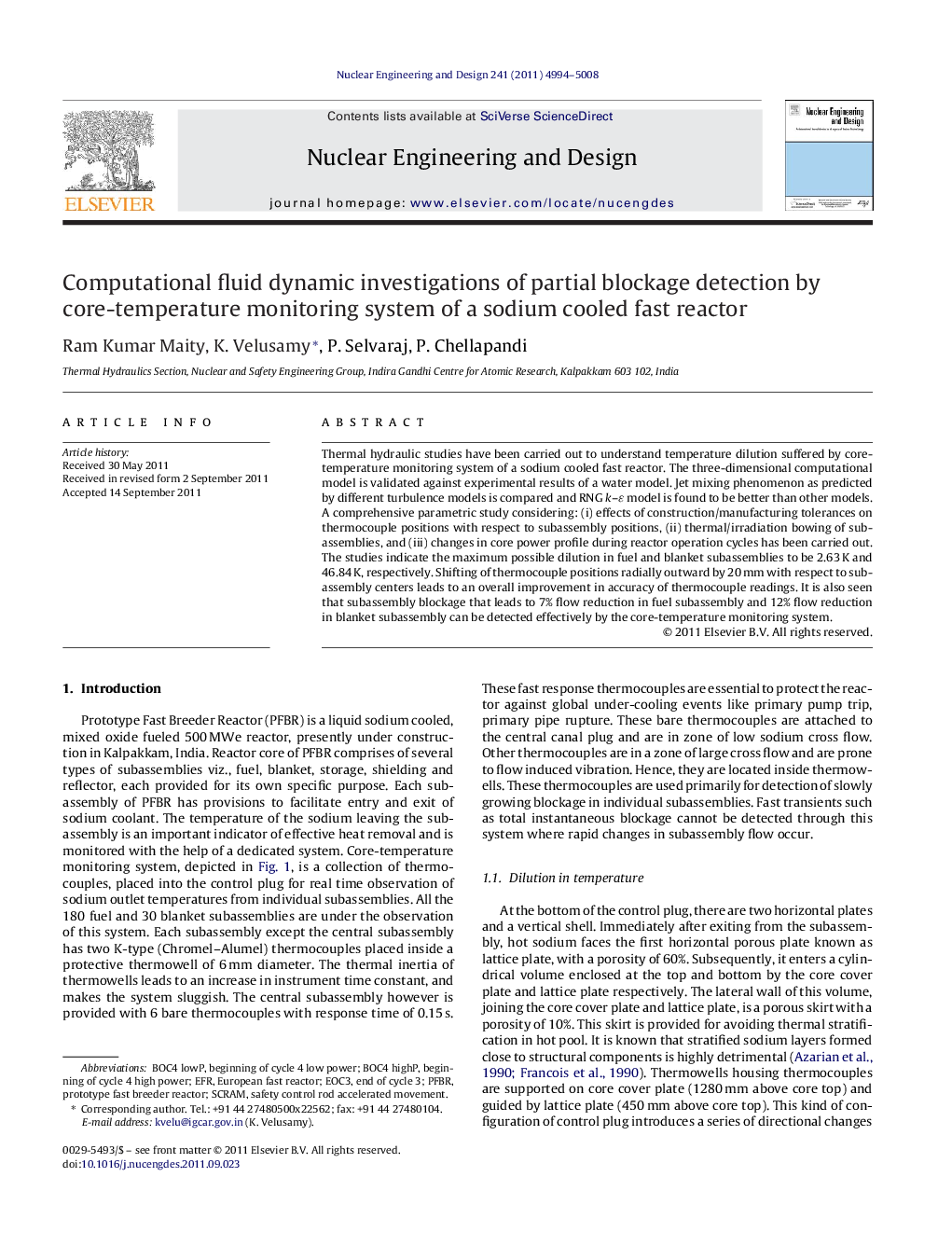| کد مقاله | کد نشریه | سال انتشار | مقاله انگلیسی | نسخه تمام متن |
|---|---|---|---|---|
| 297613 | 511762 | 2011 | 15 صفحه PDF | دانلود رایگان |

Thermal hydraulic studies have been carried out to understand temperature dilution suffered by core-temperature monitoring system of a sodium cooled fast reactor. The three-dimensional computational model is validated against experimental results of a water model. Jet mixing phenomenon as predicted by different turbulence models is compared and RNG k–ɛ model is found to be better than other models. A comprehensive parametric study considering: (i) effects of construction/manufacturing tolerances on thermocouple positions with respect to subassembly positions, (ii) thermal/irradiation bowing of subassemblies, and (iii) changes in core power profile during reactor operation cycles has been carried out. The studies indicate the maximum possible dilution in fuel and blanket subassemblies to be 2.63 K and 46.84 K, respectively. Shifting of thermocouple positions radially outward by 20 mm with respect to subassembly centers leads to an overall improvement in accuracy of thermocouple readings. It is also seen that subassembly blockage that leads to 7% flow reduction in fuel subassembly and 12% flow reduction in blanket subassembly can be detected effectively by the core-temperature monitoring system.
► We predict sodium temperature dilution at core monitor locations of an FBR.
► We validate 3D CFD results against water model experiment.
► Among five turbulence models, RNG k–ɛ model is found to be superior.
► Construction tolerance and irradiation bowing of subassemblies affect dilution.
► 7% and 12% flow reductions in fuel and blanket subassemblies can be detected.
Journal: Nuclear Engineering and Design - Volume 241, Issue 12, December 2011, Pages 4994–5008